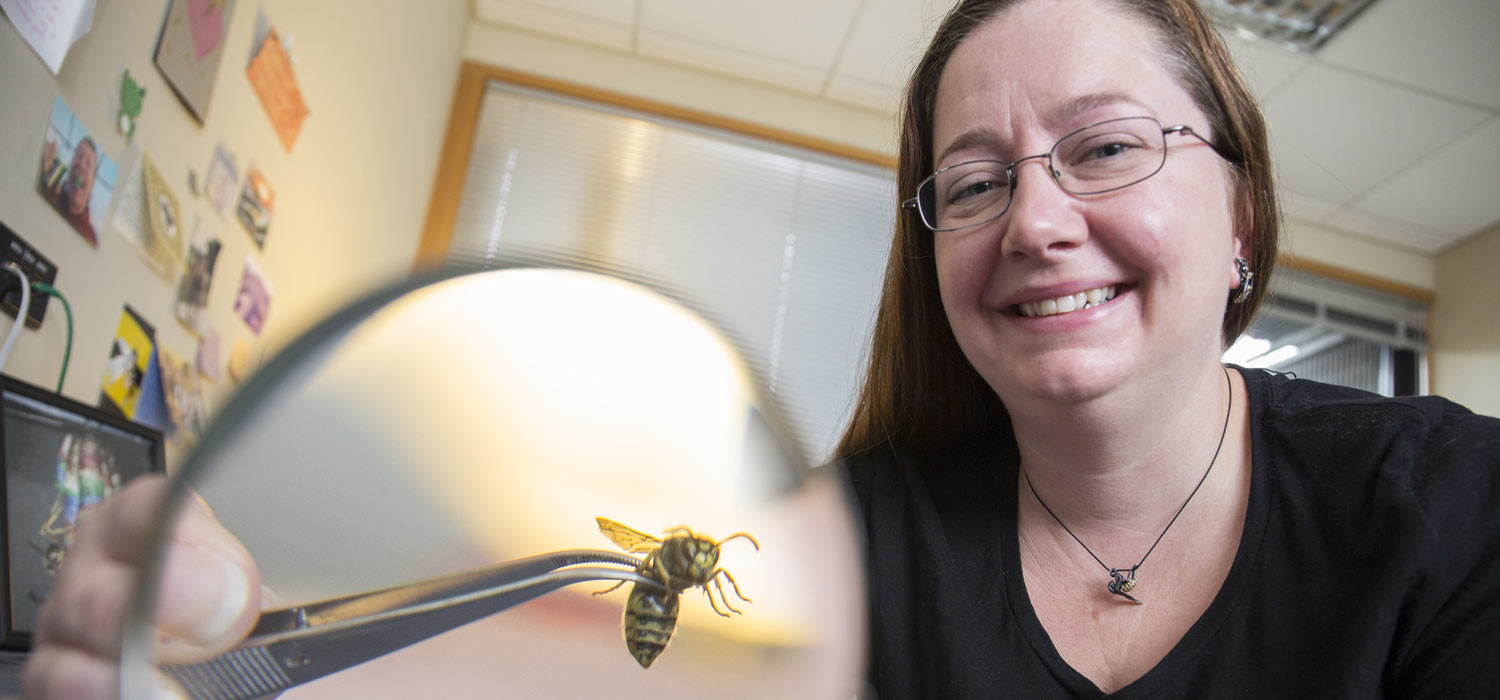
Working with wasps
Dr Jenny Jandt (Department of Zoology) likes getting kitted up and blowing air into wasp nests to provoke the residents, but it is all in the name of science.
Jandt is investigating the invasive behaviour of two species of ground-nesting social wasps: the German and common wasp. She notes that these species have spread, since their accidental introduction to New Zealand last century, to become the densest populations in the world and “quite devastating” to New Zealand ecosystems.
Jandt explains that by placing a target – a black plastic plate with a microphone inside – at the entrance to wasp nests and blowing air through a tube into the nests, they can record the relative aggressiveness of colonies by the number of attacks on the plate.
“We want to investigate how differences in colony aggression might be explained by species differences, ecological differences, geographical locations and population densities,” Jandt says. She adds that they will also identify the genes that correspond with aggressive behaviour."
“What drives me is really understanding the basic biology of these wasps and their social behaviour but, by identifying the factors that correspond to the most aggressive behaviour in these invasive wasps, we can begin to develop strategies to combat them and their spread,” she says.
Dubbed “The Wasp Lady” by former United States colleagues, Jandt is undertaking the research with the assistance of an Otago PhD student, Mateus Detoni, and in collaboration with Professor Phil Lester, from Victoria University, and students from his laboratory.